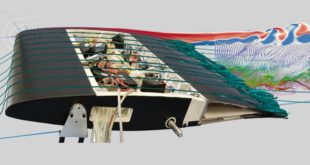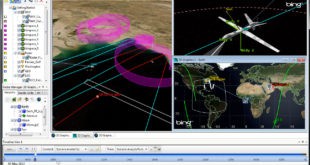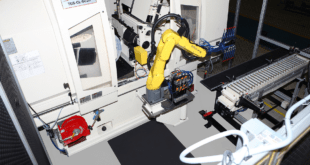Military have large demand for smart materials and devices including smart self-repair, smart clothing such as cloaking suits, and adaptive hull structures for ships. Morphing aircraft are multi-role aircraft that change their external shape substantially to adapt to a changing mission environment during flight. This creates superior system capabilities not …
Read More »Helicopter Pilots require Digital Night Vision Tech for Night Operations
Pilots rely more on vision than on any other sense to orient themselves in flight. The visual sense is especially important in collision avoidance and depth perception. A pilot’s vision sensors are the eyes generally are most accurate and reliable sense, even though they are not perfect in the way …
Read More »STK is AGI’s Multi-domain mission simulation software for simulating ground, sea, air, and space missions
Traditional systems engineering approaches to air systems design have been upended by two trends – increasing complexity and accelerating delivery timelines. Digital mission engineering is essential to these new challenges, enabling a system integrator to redirect work from physical systems to their logical representations. Space systems are exceptionally complex, …
Read More »Global military textile demand , military requirements, technology trends, and large Market growth depending on testing as per Mil-specs
Operation of Armed Forces personnel in harsh military terrains for extended tenure period necessitates protection from elements and battle hazards. Harsh military terrains exert profound effects on the physical and physiological performance of the soldiers and can impart serious health hazards on inadequately protected soldiers resulting in mission failure and …
Read More »Li-Fi Technology promise to bring the Internet ot IoT Under the Sea and improve Navy’s Ship and submarine communications
It is predicted that LEDs will be the ultimate light source in the near future powering indoor illumination, outdoor lamps, traffic signs, advertising displays, car headlights/taillights, etc. Now another technique promises to double the utility of light-emitting diodes (LEDs) by using their light as a medium for communication in a …
Read More »NASA’s Software Assurance through Software policies, engineering practices and software standards
As computing devices become more pervasive, the software systems that control them have become increasingly more complex and sophisticated. Computers are increasingly being introduced into safety-critical systems, and, as a consequence, have been involved in accidents. The world has become reliant on software-enabled systems and components. In addition, software is now …
Read More »DARPA’s AISS program to develop tools for automatic design of secured System on Chip (SoC) for Military IoT
A system on a chip or system on chip (SoC) is an integrated circuit (also known as a “chip”) that integrates all components of a computer or other electronic system on a single circuit die. Similar to how a microcontroller integrates a microprocessor with peripheral circuits and memory, an SoC …
Read More »DARPA’s Intent-Defined Adaptive Software (IDAS) seeks technologies to make DoD Software adaptive for ever-changing military mission demands
The Department of Defense (DoD) is highly dependent on software. The increasing complexity and scale of this software is creating new attack surfaces for adversaries and reducing the DoD’s ability to react to new threats. Some examples of these complex software systems are as software used in airplanes, logistics, satellites, …
Read More »Virtual design and construction (VDC ) is being used by companies around the world to improve business performance objectives like keeping projects on time and on schedule.
Virtual Design and Construction (VDC) is a service that uses digital tools to create virtual models of buildings. These digital models are then evaluated before ground is even broken, allowing project teams to optimize the way a building is constructed. This advanced technology provides opportunities to greatly improve the construction …
Read More »New Machining trends and technologies to improve efficiency, lower operating costs, greener solutions and higher precision for tasks.
Machining is a family of processes. Machining common features are the use of cutting tools to form chips that are removed from the work-part. In manufacturing, metal parts frequently require machining. The cutting action itself is a shear deformation on the work-part. Machining can be applied to a wide variety …
Read More » International Defense Security & Technology Your trusted Source for News, Research and Analysis
International Defense Security & Technology Your trusted Source for News, Research and Analysis









